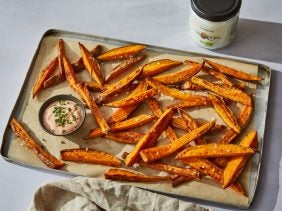Amazing squash nutrition facts to pump(kin) up your health
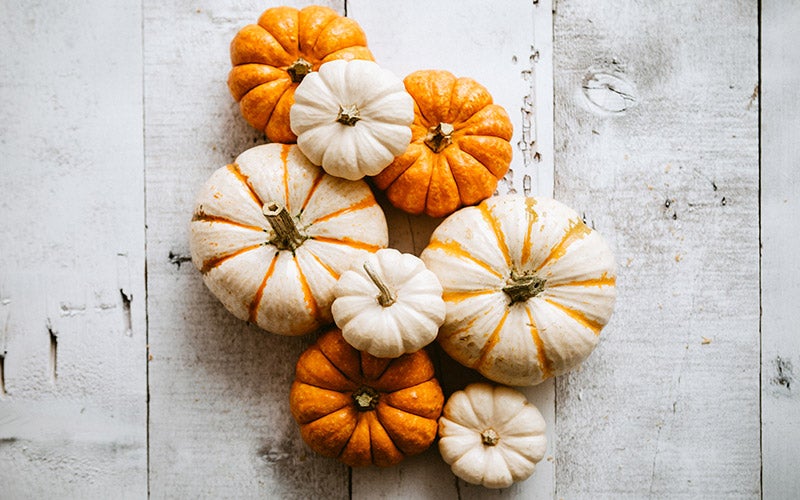 ©RyanJLane
©RyanJLane
When the leaves start to change color and the sun begins setting earlier, we all know that fall has arrived. There are so many great reasons to look forward to the season, but seasonal squash is easily one of our favorites! Tasty and full of health benefits, it deserves a special spot on your plate. Let us tell you some squash nutrition facts even you might not have known!
The different kinds of squash
Pumpkins are great for Jack-o-lanterns and carrying Cinderella away at midnight, but they’re even better in your food. Pumpkins are just one of over 100 squash varieties that also includes everything from butternut to acorn. Most are orange because they contain high levels of beta-carotene, a secondary plant substance that is thought to have antioxidant effects and can help the body absorb vitamin A. Along with vitamins A, C, and E, as well as minerals and essential elements like magnesium, potassium, zinc, and a large amount of dietary fiber, these gourds are nutrition powerhouses! Find more information about all the different varieties below.
Our tip: If you can’t get your hands on any gourds, you can just as easily get the nutrients you need from our Daily Vitamins. Made from the best of fruits and vegetables, they’re a good source of vitamin C, D, and B12.Discover our Daily Vitamins
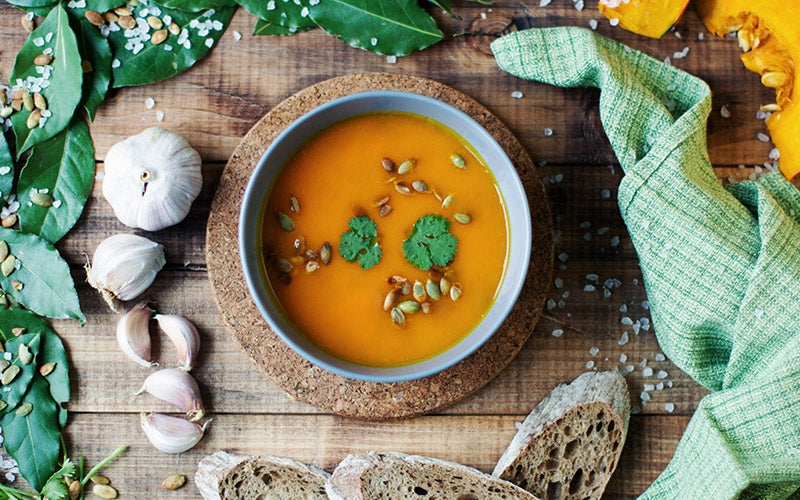
Hokkaido Pumpkins (a.k.a. sunshine squash or red kuri squash)
Hokkaido pumpkin, a.k.a. sunshine squash, red kuri squash, or orange kabocha, is an ideal ingredient to eat if you’re trying to lose weight because it is low in calories and fat. And all that while tasting incredibly sweet and super delicious! Another secret making these globe-shaped friends even more amazing? The skin is also edible! Most people peel them, thinking the skin will be too tough to eat. What they don’t realize is that they’re a) wrong, and b) missing out on a treasure trove of nutrients. The skin on these balls of sunshine softens up completely when cooked or roasted! Opt for organic gourds whenever possible and clean them well before you start cooking. This goes double for when you’re planning to eat the skin.
Our tip: Not sure if a pumpkin is ready to eat? Knock on it. If it sounds hollow, it’s ripe!
Red kuri squash/Sunshine squash nutrition facts (100g)
| Calories (kcal) | 63 |
| Carbs | 13g |
| Fat | 12g |
| Protein | 2g |
Butternut squash
Unlike pumpkins, butternut squash has much paler skin. Its flesh is light and orange and, as its name suggests, has a buttery taste and texture. Unfortunately the skin is inedible whether raw or cooked, because no amount of time in the oven makes it edible. Make sure to peel it before eating.
Peeling a butternut squash
To remove the skin, start by cutting the butternut squash in half, or (if it’s really large) into quarters. To prevent it from moving too much, cut off both ends. Remove the seeds with a tablespoon and then peel it with a large knife or a vegetable peeler, being careful not to cut yourself.
Our tip: If you want butternut squash but don’t want to peel it, bake it with the skin on and remove it afterward. It will just slide right off!
Butternut squash nutrition facts (100g)
| Calories (kcal) | 38 |
| Carbs | 8g |
| Fat | 10g |
| Protein | 1g |
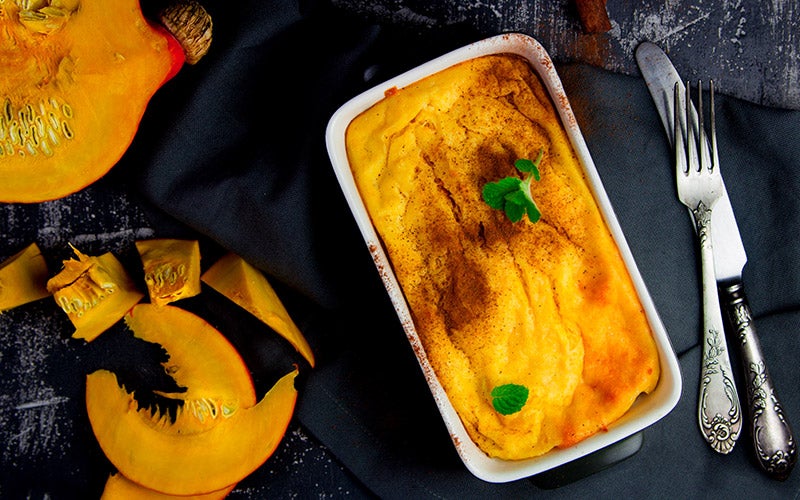
Squash recipes
Ready to cook with squash? Below, you’ll find excellent, healthy recipes that will help you put the autumn fruit to good use.
Raw Vegan Pumpkin Soup
Nothing is better than a bowl of soup after a brisk fall day, especially this raw vegan pumpkin soup. Why? The name says it all: it’s totally vegan and you don’t need to cook it. Looking for some starch on the side? Serve up a slice of our Vegan Protein Bread.check out our recipe
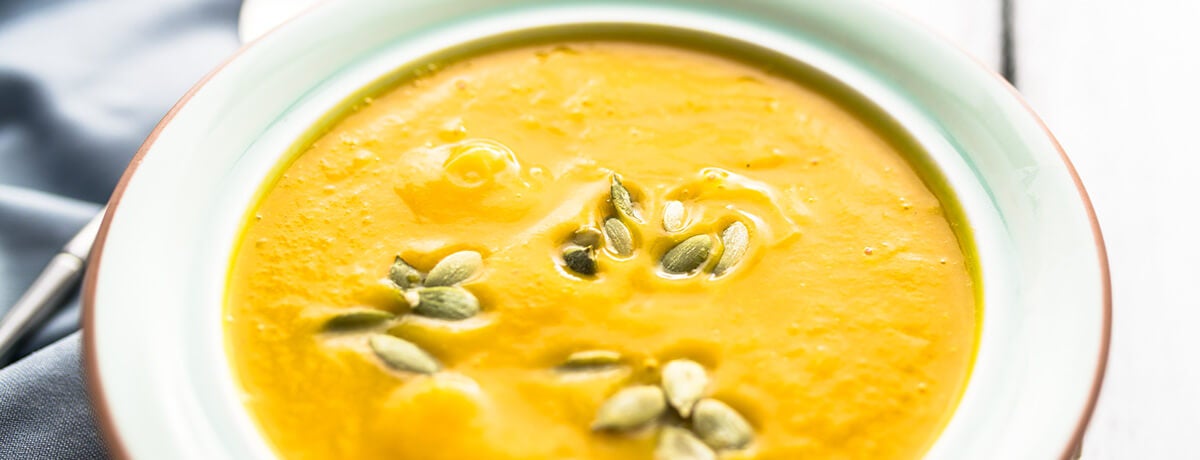
Pumpkin Salad
Just because pumpkin is low in calories doesn’t mean it’s not delicious. This pumpkin salad takes advantage of the squash’s sweet earthiness with all kinds of flavor complements. The nuts and berries accentuate the pumpkin’s nutty taste as well.
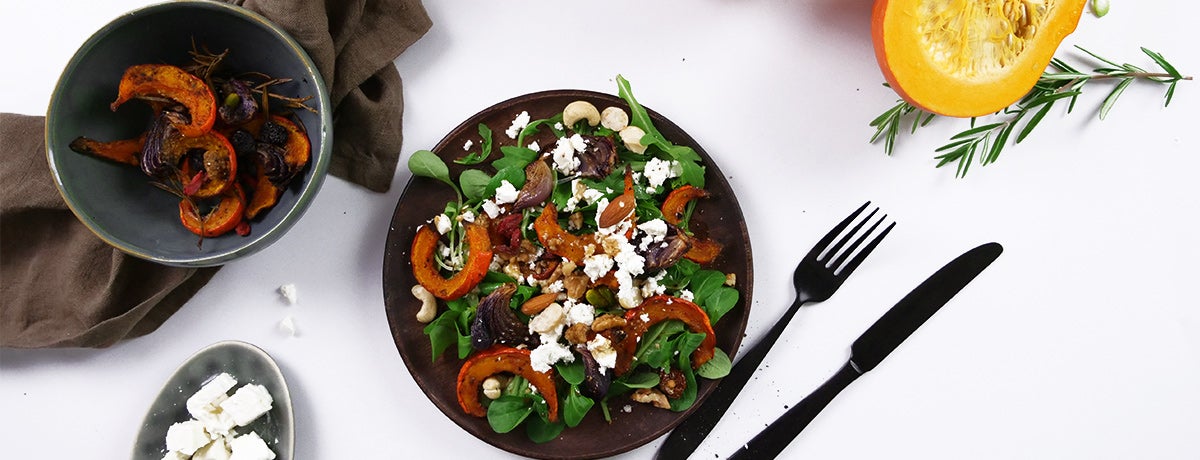
Food Fact Friday: Squash and Pumpkin Nutrition Facts
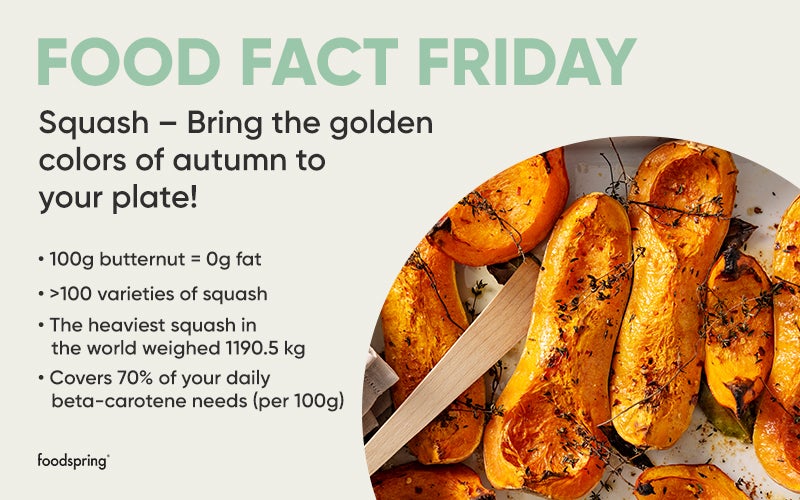
Squash: Our Summary
Gourds aren’t just a beautiful addition to your plate — it’s also great for your body, thanks to all the beta-carotene, vitamin A, and vitamin C it contains. Red kuri and butternut are among the most popular types of winter squash and have delicious nutty and sweet notes. Nothing is more comforting than their creamy texture on a cool autumn day.
Sources for this article
We at foodspring use only high-quality sources, including peer-reviewed studies, to support the facts within our articles. Read our editorial policy to learn more about how we fact-check and keep our content accurate, reliable, and trustworthy.


























